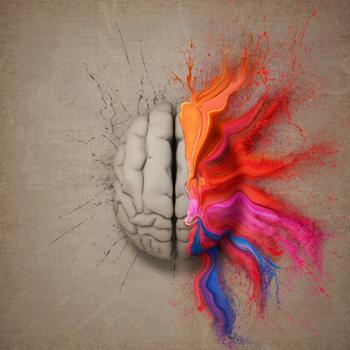The prostate is a part of the male reproductive system. It is located deep within the male body, just below the bladder and in front of the rectum.
This walnut-shaped organ consists of two sections. It surrounds the urethra, where the urethra joins the bladder. The prostate produces prostatic fluid. This is one of the main components of semen. It is important for male fertility.
In conventional medicine, a digital rectal examination is carried out by a physician to diagnose prostatitis or inflammation of the prostate.
A procedure known as “drainage” is sometimes referred to as prostate massage. It is similar to the digital rectal exam, but it usually takes longer. It aims to “wring out” the prostate.
Some alternative practitioners believe that “milking the prostate” in this way can relieve certain symptoms of an inflamed prostate.
Contents of this article:
- What is prostatitis?
- What is a prostate massage?
- Potential benefits of prostate massage
- Risks of prostate massage
What is prostatitis?
According to the National Institute of Diabetes and Digestive and Kidney Diseases (NIDDK), prostatitis is a common urinary tract problem in men of all ages.
![[prostate gland]](http://www.medicinetechnews.com/images/201611/prostate-gland.jpg)
Some people believe that prostate massage can help relieve symptoms of prostatitis.
Each year, it prompts roughly 2 million visits to medical professionals in the United States.
The symptoms associated with prostatitis include:
- Frequent, painful, weak, blocked, or incomplete urination
- Blood in the urine
- Erectile dysfunction
- Painful ejaculation
- Fever
- Muscle pain
- Back pain
- Pain in the area between the anus and the scrotum.
The prostate gland can become inflamed for a number of reasons, including bacteria, nonbacterial microorganisms, immune system response, and nerve damage. The inflammation can last for a short while, or it can be ongoing.
Treatment is usually with medications such as antibiotics and muscle relaxants, depending on the cause. These treatments are effective for many patients, but not all.
What is a prostate massage?
A digital rectal exam is used to check the overall size and condition of the prostate gland. During the procedure, a doctor will check for lumps and other changes that may be signs of health issues.
A doctor wearing a lubricated glove performs the test by inserting a finger into the patient’s rectum and pressing the sides of the prostate nearby.
If the symptoms suggest an infection, the doctor may massage, or rub, the prostate to obtain fluid for later study.
The fluid released by the prostate is called expressed prostatic secretion. Doctors will analyze it for signs of inflammation or infection.
Types of prostate massage
![[doctor and patient]](http://www.medicinetechnews.com/images/201611/doctor-and-patient.jpg)
A doctor may use a prostate massage technique to diagnose prostate problems but not to treat them.
Some individuals use prostate massage regularly to deal with the symptoms of their prostate problems.
This may be done manually, or with a prostate massaging device.
Prostate massage can be slightly painful. Some people report an increased burning sensation after drainage, due to the nature of the fluids that are released.
External prostate massage may involve exerting pressure on the perineum, the area about halfway between the anus and the scrotum.
It can also be done by gently rubbing the belly between the public bone and the belly button.
There are also devices to assist with external prostate massage.
Potential benefits of prostate massage
Supporters claim that prostate massage:
- Prevents the buildup of prostatic fluid in the prostate
- Improves the effectiveness of antibiotics against prostatitis
- Supports healthy prostate functioning
- Heightens sexual experience
- Reduces the pain and discomfort of an inflamed prostate.
External prostate massage is said to reduce pain, improve erection, and ease urination.
There is little medical evidence to support these claims.
Risks of prostate massage
A number of risks are associated with the procedure.
These include:
- Worsening of acute prostatitis and potential blood poisoning, due to a risk of spreading infection
- Bleeding around the prostate
- Cellulitis, a serious skin infection
- Hemorrhoids flare-ups
- Spreading of prostate cancer, if present
- Damage to the rectal lining.
Individuals with epididymitis, an inflammation of the tube connecting the testicle to the vas deferens, should avoid prostate massage.
Due to the potential for damage to the rectal lining, the pressure used on the prostate must be minimal. The area is very sensitive, so any intervention must be carried out with caution and proper hygiene.
Physicians generally recommend that only trained healthcare professionals treat the prostate, and that they do so with great care and gentleness. As a general rule, physicians do not recommend prostate massage.



